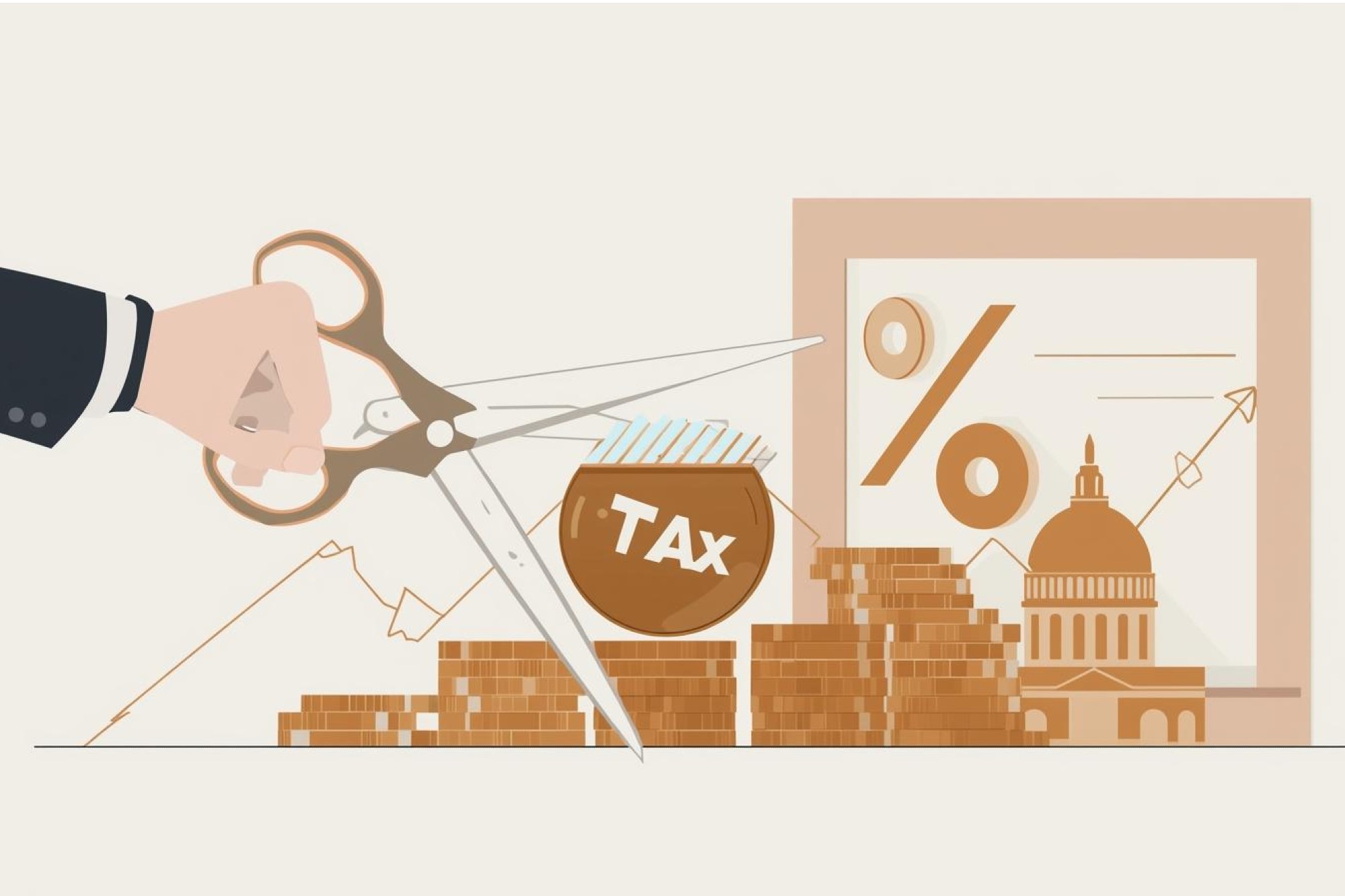Two-Tier GST overhaul spurs manufacturing revival for India
By Staff Report September 4, 2025 7:12 pm IST
While India was jolting to find a new confederate due to the whimsies and duplicity of the said ally, the changes in the GST reforms have come as a respite. There could not be a better time to bring the changes in taxation, which were lamented due to the disparity.
Changes in Goods and Services Tax (GST) rates, as recommended by the GST Council, are set to take effect from September 22, 2025. The GST rates are simplified with only a two-tier system of 5% and 18% in place, alongside a special 40% rate for luxury and “sin” goods. These changes will impact a wide array of goods and services, with the primary goal of simplifying the tax structure and ensuring uniform rates for similar products. The new rates will rationalise the tax burden on consumers and maintain a balance between encouraging domestic production and providing relief to users.
GST Structure
- Old Structure: 5%, 12%, 18%, 28%
- New Structure: 5% (Merit Rate) and 18% (Standard Rate)
The restructuring of the tax regime is envisioned to boost the country’s GDP by 0.2-0.3% in the financial year 2025-26.
Impact on the Manufacturing Sector
The recent GST rate revisions have had a significant impact on various manufacturing sub-sectors. The changes aim to reduce tax-related complications, lower production costs for specific goods, and promote domestic manufacturing.
Automotive and Transportation
- Small Cars: The GST rate on small cars (petrol, LPG, or CNG with engines up to 1200cc and diesel with engines up to 1500cc) has been reduced from 28% to 18%. This reduction is expected to make these vehicles more affordable.
- Mid-size and Large Cars: The new GST rate for mid-size and large cars (exceeding 1500cc or 4000mm in length) is now 40%, with the compensation cess being merged into this single rate. The same 40% rate also applies to utility vehicles (SUVs, MUVs, etc.) with an engine capacity over 1500cc, length over 4000mm, and a ground clearance of 170mm or more.
- Other Vehicles: GST has been reduced to 18% on three-wheelers, buses, goods transport vehicles (lorries, trucks), and ambulances.
- Motorcycles: Motorcycles with an engine capacity up to 350cc will be taxed at 18%, while those exceeding 350cc will face a 40% GST rate.
- Bicycles: The GST rate on bicycles and their parts has been reduced to 5%.
- Transportation Services: Passenger transport by bus is taxed at a merit rate of 5% (no ITC) with an option for 18% (full ITC). Passenger air transport is 5% for economy class and 18% for all others. Goods Transport Agency (GTA) and Container Train Operator (CTO) services will also have a choice between 5% (no ITC) or 18% (full ITC).
GST reforms will provide a strong impetus to India’s mobility and manufacturing sectors. The decision to reduce GST on auto components from 28% to 18% will ease cost pressures on the automotive supply chain, enhance efficiencies, and provide much-needed relief to manufacturers and OEMs. Dr. Sudhir Mehta, Founder & Chairman – EKA Mobility; Chairman & Managing Director – Pinnacle Industries; Advisor – Nation First Policy Research Centre; Past President – MCCIA shares that the reforms will accelerate the adoption of electric commercial vehicles. He adds, “The Super Tax Rationalisation Exercise, too, is a positive signal reflecting a broader momentum that can pave the way for sustained high growth.”
Nemin Vora, CEO, Odysse Electric, welcomes the government’s recent GST reform that rationalises rates across the automobile sector, making mobility more affordable for all. While traditional petrol and diesel vehicles see a reduction, it is important to note that electric two-wheelers already benefit from a minimal 5% GST – the lowest in the category. With such consistent policy backing, India is set to fast-track its transition towards sustainable mobility and achieve greater EV adoption nationwide.
Agnishwar Jayaprakash, Founder and CEO of Garuda Aerospace, thinks that for companies like Garuda Aerospace, which strongly believe that indigenous drones are the need of the hour, this reform provides the opportunity to deepen investments in R&D, foster innovation, and scale up manufacturing. Lower costs also enable us to explore entry into new markets, encouraging and promoting the wider use of drones. This move directly improves the affordability of drones for farmers and allied sectors, further boosting the adoption of agri-drones across the country. It is also a step forward for initiatives like NaMo Drone Didi, which promote precision agriculture through drone usage. Moreover, it equips defence and surveillance sectors with cost-effective drone solutions for public safety, disaster management, and other critical applications. We anticipate that this progressive step towards making India the global hub for drone technology and being Atmanirbhar Bharat will enhance productivity and efficiency, while accelerating drone adoption across industries such as logistics and infrastructure.”
Electronics and Appliances
- Air Conditioners & Dishwashers: GST on air conditioners and dishwashers has been reduced from 28% to 18%.
- TVs and Monitors: All TVs and monitors, regardless of size, will now be taxed uniformly at 18%. Previously, monitors over 32 inches had a 28% GST rate.
- Batteries: All batteries under heading 8507 will be uniformly taxed at 18%, a significant reduction for batteries other than lithium-ion ones, which were previously taxed at 28%.
Rationalising taxes on consumer electronics, critical components like silicon wafers, and logistics will help reduce the cost of hardware that powers modern surveillance infrastructure, making advanced security solutions more accessible to businesses, housing societies, and urban centres. Aditya Khemka, Managing Director of CP PLUS, adds that while adjustments may be needed on account of higher GST on outsourced job work, the overall direction supports affordability, faster adoption, and strengthens the government’s vision of Atmanirbhar Bharat by boosting local manufacturing and value creation. For the surveillance industry, this creates an important opportunity to accelerate organised deployment and deliver safer, smarter communities across the country.
GST reforms on televisions and air conditioners come at a critical juncture. By reducing price barriers, these reforms enable a larger and more diverse consumer base, especially in emerging markets and Tier-2 and Tier-3 cities, to access high-quality, energy-efficient products, adds Pankaj Rana, Chief Executive Officer at Hisense India.
Ravi Agarwal, Co-Founder and Managing Director of Cellecor, welcomes GST reforms as it is a decisive step towards creating a more level playing field and fostering growth within the consumer electronics and appliances industry. The rationalisation of GST rates to a uniform 18% on products such as TVs, monitors, air conditioners, and dishwashers is a particularly positive move.
Equally significant is the alignment of GST on lithium-ion batteries at 18%. This will have a direct impact on the ecosystem of wireless, portable, and smart devices by reducing input costs across the value chain.
Machinery
- Technical Textiles: While some technical textiles may face a deeper “inverted duty structure” (where tax on inputs is higher than on the finished product), the government has clarified that a refund mechanism for accumulated input tax credit (ITC) is available, with process reforms aimed at ensuring expedited refunds.
- Agricultural Machinery: The GST rate on many agricultural machinery and equipment, such as sprinklers, drip irrigation systems, and harvesting machinery, has been reduced from 12% to 5%. The government explains that a full exemption would be counterproductive, as it would prevent manufacturers from claiming ITC, ultimately increasing production costs and potentially raising prices for farmers.
Other Noteworthy Changes
- Renewable Energy: To promote green energy, the GST rate on renewable energy equipment and devices has been reduced from 12% to 5%.
- General Job Work: Residual job work services, for which no specific rate is notified, will now be taxed at 18% instead of 12%.
- Specific Job Work: Job work services for pharmaceutical products, and for hides, skins, and leather, have been reduced from 12% to 5%.9 Job work for alcoholic liquor remains at 18%.
- Batteries: All batteries under heading 8507 will now be uniformly taxed at 18%, down from 28% for many types.
- Building Materials: GST on marble, travertine, and granite blocks has been reduced from 12% to 5%.
Services
- Accommodation: Hotel accommodation with a value of supply up to Rs. 7,500 per unit per day will be taxed at 5% without ITC.
- Beauty & Wellness: Services from health clubs, salons, barbers, fitness centres, and yoga are now taxed at 5% without ITC, down from 18%.15
- Entertainment: Admission to events like the IPL now attracts a 40% GST rate.16 Admission to other sporting events with a ticket price over Rs. 500 continues to be taxed at 18%.
- Gambling: Lottery tickets, betting, gambling, casinos, and horse racing will all be subject to a 40% GST rate.17
- Works Contracts: Services for offshore oil and gas exploration and production will be taxed at 18%.
- Insurance: Life insurance (term, ULIP, and endowment plans) and individual health insurance (including family floater and senior citizen policies) are now exempt from GST.
Wider impact
The industry was grappling and trying to decipher the alternatives to their exports after the tariff scare by the U.S. These GST reforms will put India amongst the nations with moderate tax regimes, making it lucrative for the investors. The ease in understanding the market will also attract foreign buyers. Shenu Agarwal, MD & CEO, Ashok Leyland, appreciated the shift to a streamlined two-tier system of 5% and 18% which will ease compliance and bolster key sectors, uplift consumer sentiment, and reduce the financial burden on the common man. Crucially, this move will help mitigate the impact of the recently imposed US tariffs. The specific relief for the commercial vehicle industry is especially welcome. On one hand, it will spur freight traffic, and on the other, it will bring down the cost of buses and trucks, unleashing demand trajectory for commercial vehicles.
Vijendra Babu N, Founder, Managing Director & CEO of Micro Plastics Pvt. Ltd., says that this move will make toys more affordable for children across socio-economic segments. While lower GST on toys will enhance consumer spending, it will also strengthen the domestic industry in providing affordable means for nurturing imagination and playtime for children.
These rate changes are a step towards rationalising the GST structure, particularly by merging the compensation cess with the GST rate on certain goods to maintain the pre-rationalisation tax levels. This move aims to simplify compliance and administration for businesses and consumers alike.
Cookie Consent
We use cookies to personalize your experience. By continuing to visit this website you agree to our Terms & Conditions, Privacy Policy and Cookie Policy.



















